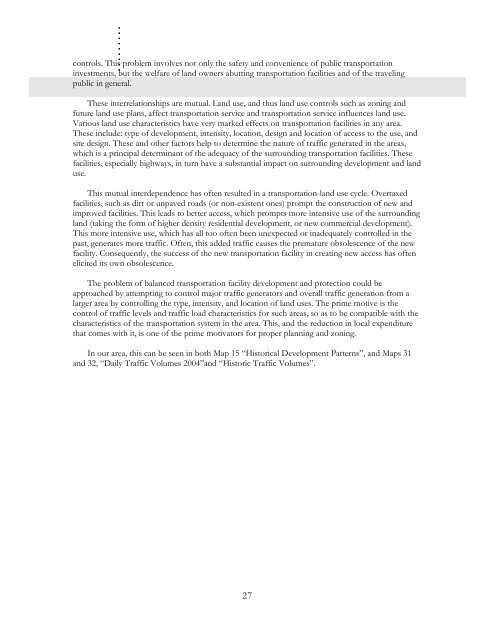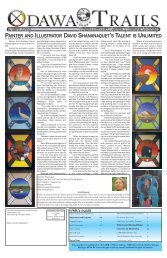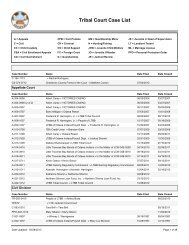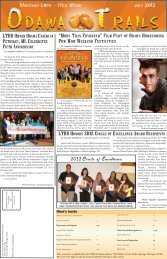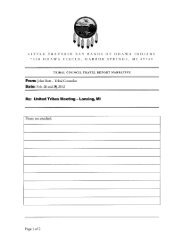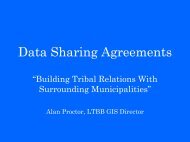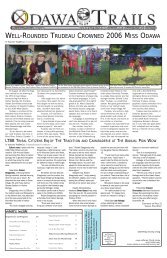LTBB Master Land Use Plan - Little Traverse Bay Bands of Odawa ...
LTBB Master Land Use Plan - Little Traverse Bay Bands of Odawa ...
LTBB Master Land Use Plan - Little Traverse Bay Bands of Odawa ...
You also want an ePaper? Increase the reach of your titles
YUMPU automatically turns print PDFs into web optimized ePapers that Google loves.
.<br />
controls. This problem involves not only the safety and convenience <strong>of</strong> public transportation<br />
investments, but the welfare <strong>of</strong> land owners abutting transportation facilities and <strong>of</strong> the traveling<br />
public in general.<br />
These interrelationships are mutual. <strong>Land</strong> use, and thus land use controls such as zoning and<br />
future land use plans, affect transportation service and transportation service influences land use.<br />
Various land use characteristics have very marked effects on transportation facilities in any area.<br />
These include: type <strong>of</strong> development, intensity, location, design and location <strong>of</strong> access to the use, and<br />
site design. These and other factors help to determine the nature <strong>of</strong> traffic generated in the areas,<br />
which is a principal determinant <strong>of</strong> the adequacy <strong>of</strong> the surrounding transportation facilities. These<br />
facilities, especially highways, in turn have a substantial impact on surrounding development and land<br />
use.<br />
This mutual interdependence has <strong>of</strong>ten resulted in a transportation-land use cycle. Overtaxed<br />
facilities, such as dirt or unpaved roads (or non-existent ones) prompt the construction <strong>of</strong> new and<br />
improved facilities. This leads to better access, which prompts more intensive use <strong>of</strong> the surrounding<br />
land (taking the form <strong>of</strong> higher density residential development, or new commercial development).<br />
This more intensive use, which has all too <strong>of</strong>ten been unexpected or inadequately controlled in the<br />
past, generates more traffic. Often, this added traffic causes the premature obsolescence <strong>of</strong> the new<br />
facility. Consequently, the success <strong>of</strong> the new transportation facility in creating new access has <strong>of</strong>ten<br />
elicited its own obsolescence.<br />
The problem <strong>of</strong> balanced transportation facility development and protection could be<br />
approached by attempting to control major traffic generators and overall traffic generation from a<br />
larger area by controlling the type, intensity, and location <strong>of</strong> land uses. The prime motive is the<br />
control <strong>of</strong> traffic levels and traffic load characteristics for such areas, so as to be compatible with the<br />
characteristics <strong>of</strong> the transportation system in the area. This, and the reduction in local expenditure<br />
that comes with it, is one <strong>of</strong> the prime motivators for proper planning and zoning.<br />
In our area, this can be seen in both Map 15 “Historical Development Patterns”, and Maps 31<br />
and 32, “Daily Traffic Volumes 2004”and “Historic Traffic Volumes”.<br />
27


